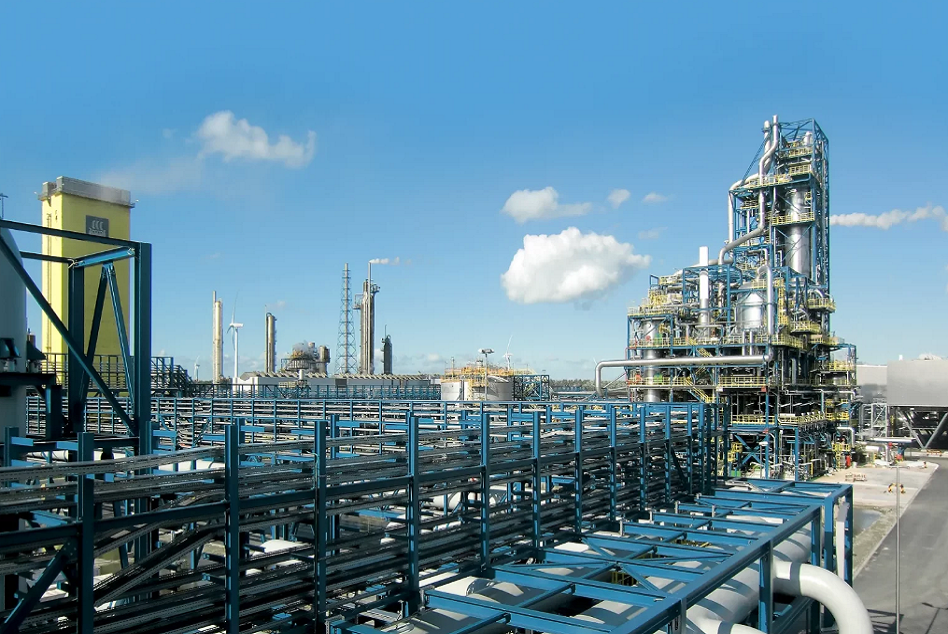Harnstoff ist eine organische Verbindung, die Stickstoff enthält und weithin für ihre bedeutende Rolle in Landwirtschaft und Industrie anerkannt ist. Harnstoff ist ein wichtiger stickstoffreicher Dünger, der das Wachstum von Pflanzen und die Fruchtbarkeit des Bodens verbessert. Über die landwirtschaftliche Nutzung hinaus dient er als Vorläufer in der chemischen Produktion, z. B. bei der Herstellung von Kunststoffen, Klebstoffen und Arzneimitteln. Darüber hinaus machen seine feuchtigkeitsspendenden Eigenschaften ihn wertvoll in Hautpflegeprodukten, und er trägt zur Reduzierung der Emissionen von Dieselmotoren durch seine Verwendung in Dieselabgasflüssigkeit (DEF) bei. Dank seiner vielseitigen Anwendungen unterstreicht Harnstoff seine Bedeutung in verschiedenen Bereichen wie der landwirtschaftlichen Produktivität, der chemischen Synthese und dem Umweltschutz.
Ammoniak-Produktionsprozess: Ammoniak ist ein entscheidender Bestandteil bei der Synthese von Harnstoff. Seine Herstellung erfolgt häufig nach dem Haber-Bosch-Verfahren, bei dem Stickstoffgas und Wasserstoffgas unter hohen Temperaturen und Drücken über einen Katalysator reagieren.
Kohlendioxid-Erzeugungsprozess: Kohlendioxid wird aus externen Quellen wie Kohlenstoffabscheidungssystemen oder intern durch Verfahren wie die Dampfreformierung von Erdgas gewonnen.
Ammoniak- und Kohlendioxid-Reaktion: Ammoniak und Kohlendioxid werden in einen Reaktor eingebracht, wo sie chemisch zu Ammoniumcarbamat, einer Zwischenverbindung, reagieren.
Zersetzungsprozess: Ammoniumcarbamat wird erhitzt und zerfällt durch eine Rückreaktion in Harnstoff und Wasser.
Trennung: Harnstoff wird aus dem Reaktionsgemisch getrennt, meist durch Absenkung der Temperatur zur Kondensation und Ausfällung von Harnstoffkristallen.
Reinigung von Harnstoff:
Kristallisation: Harnstoffkristalle werden aus der Flüssigmischung isoliert, gewaschen und dann in einer Zentrifuge verarbeitet, um überschüssige Flüssigkeit zu entfernen.
Trocknung: Nasse Harnstoffkristalle werden getrocknet, um restliche Feuchtigkeit zu beseitigen.
Prillieren oder Granulieren: Harnstoff kann in Prills oder Granulate umgewandelt werden, die einfacher zu handhaben und zu verteilen sind.
Verpackung und Vertrieb: Das fertige Harnstoffprodukt – ob in fester Form oder als Lösung – wird verpackt und für den Vertrieb an landwirtschaftliche Märkte oder andere Sektoren vorbereitet.
Erleben Sie Klinger Kloppes moderne Harnstoffproduktionsanlage, in der Innovation auf Nachhaltigkeit trifft, um eine umweltbewusstere Zukunft für Industrien weltweit zu gestalten. Begeben Sie sich auf eine Reise voller Chancen, während wir die Harnstoffproduktion mit Exzellenz und Umweltengagement neu definieren.
Innovative Lösungen: Bei Klinger Kloppe ist Innovation die treibende Kraft hinter unserer Harnstoffproduktionsanlage. Unsere fortschrittlichen Prozesse gewährleisten hochwertigen Harnstoff und bleiben stets an der Spitze industrieller Entwicklungen.
Nachhaltige Exzellenz: Wir legen Wert auf ökologische Verantwortung. Unsere Anlage integriert umweltfreundliche Designs und Praktiken, reduziert CO₂-Fußabdrücke und passt sich Ihren Nachhaltigkeitszielen an.
Individuelle Ansätze: Unser Expertenteam arbeitet eng mit Ihnen zusammen, um Harnstoffproduktionsprozesse zu entwickeln, die nahtlos zu Ihren branchenspezifischen Anforderungen passen.
Freigesetzte Zuverlässigkeit: Vertrauen Sie auf Klinger Kloppes Harnstoffproduktionsanlage für gleichbleibend zuverlässige Ergebnisse – damit Ihre Abläufe ohne Kompromisse gedeihen können.
Unerschütterliche Qualität: Qualität ist unser Versprechen. Strenge Tests und Qualitätskontrollen stellen sicher, dass der produzierte Harnstoff höchsten Industriestandards entspricht.
Rundum-Support: Vom Konzept bis zum Betrieb begleitet Sie unser engagiertes Support-Team bei jedem Schritt – für reibungslose Abläufe und vollständige Sicherheit.

